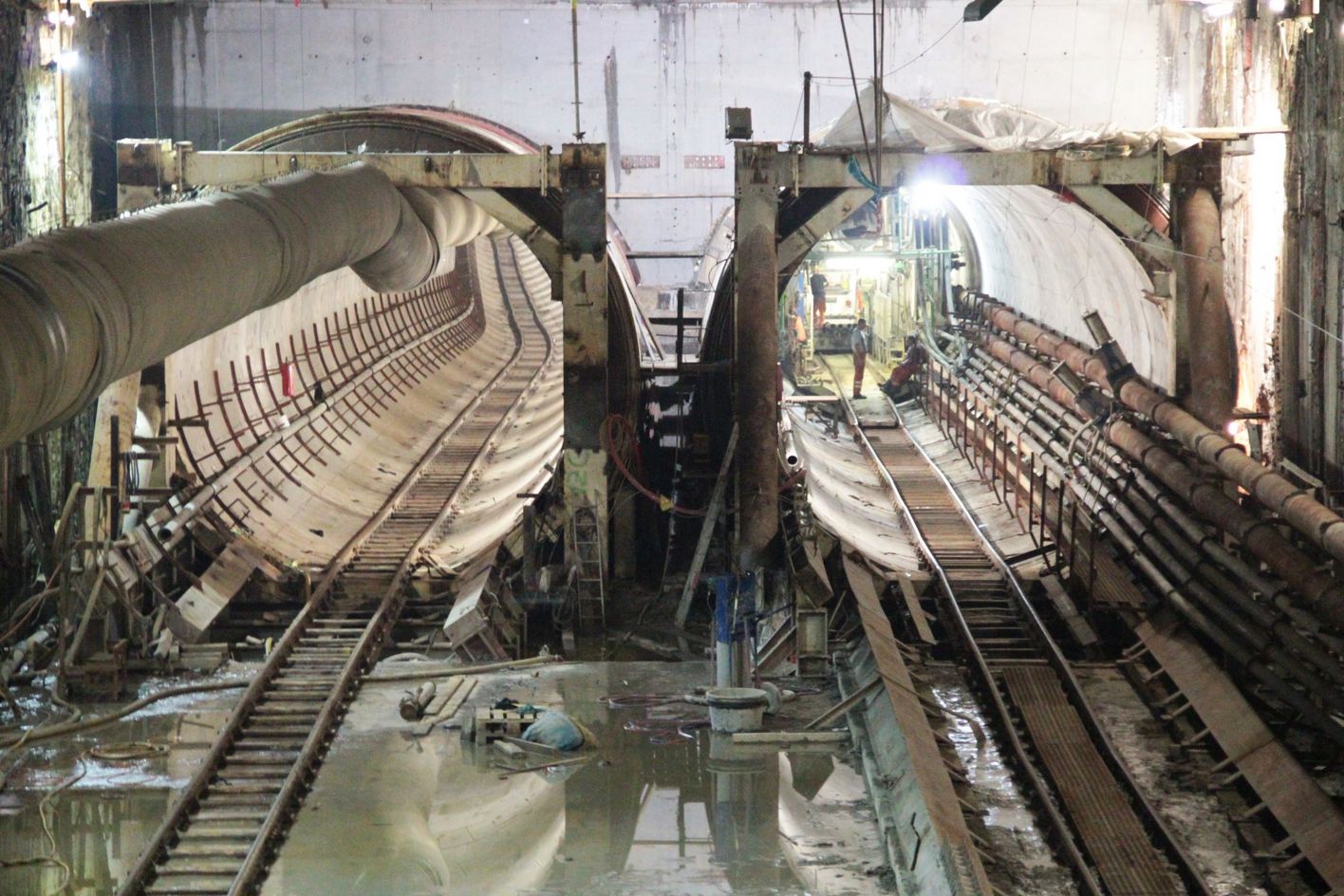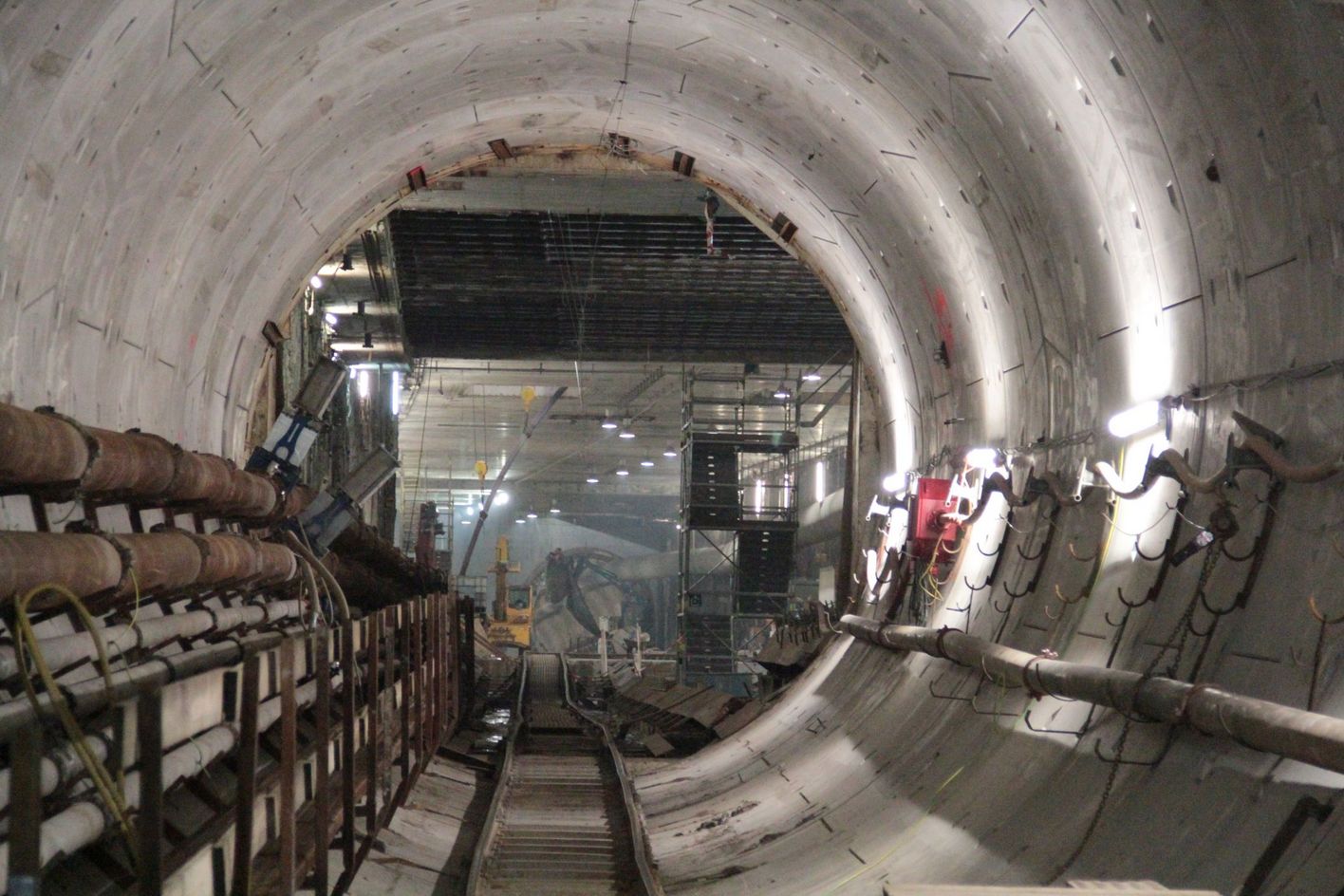Bored tunnel technique
To enable boring in the loose soil Amsterdam is built on, an innovative tunnel boring machine was developed which, at the time, the world had never seen before. It was a very difficult challenge to move the four boring machines as carefully as possible in order to avoid the thousands of wooden and concrete foundation piles underneath the densely populated city centre of Amsterdam. The four tunnel boring machines, named Victoria, Molly, Noortje and Gravin, spent 2.5 years underground to bore the tunnels.
The bored tunnel between Damrak and Scheldeplein is 3.8 kilometres in length, including the metro stations Rokin, Vijzelgracht and De Pijp. The tunnel follows a practically straight line, running underneath existing streets. It comprises two tunnels with an internal diameter of 5.9 meters, which lie at a depth of between 20 and 30 meters below Amsterdam Ordnance Datum. On the Damrak-Vijzelgracht route, the tunnels are next to each other, and one over the other on the remainder of the route.The tunnel tubes between Damrak and Rokin were bored from north to south, the others from south to north.
A few facts and figures:
- the total tunnel boring distance covers 6,228 meters;
- the tunnels are between 20 and 30 meters below Amsterdam;
- the tunnels are made up of 24,858 tunnel segments;
- tunnel boring took up 587 days over a period of 2 years and 8 months;
- the average daily distance covered by the boring machines was 10.6 meters;
- 40 boring machine operators, divided over four boring machine teams, worked on the tunnels;
- the speed record was won by Victoria – she covered 30 meters within 24 hours;
- 232,000 m3 of soil made way for the tunnels below Amsterdam’s city centre.

